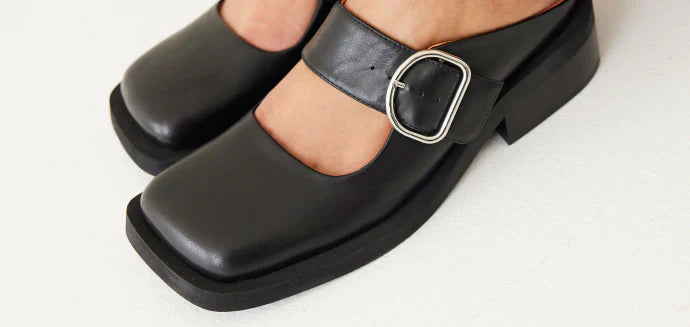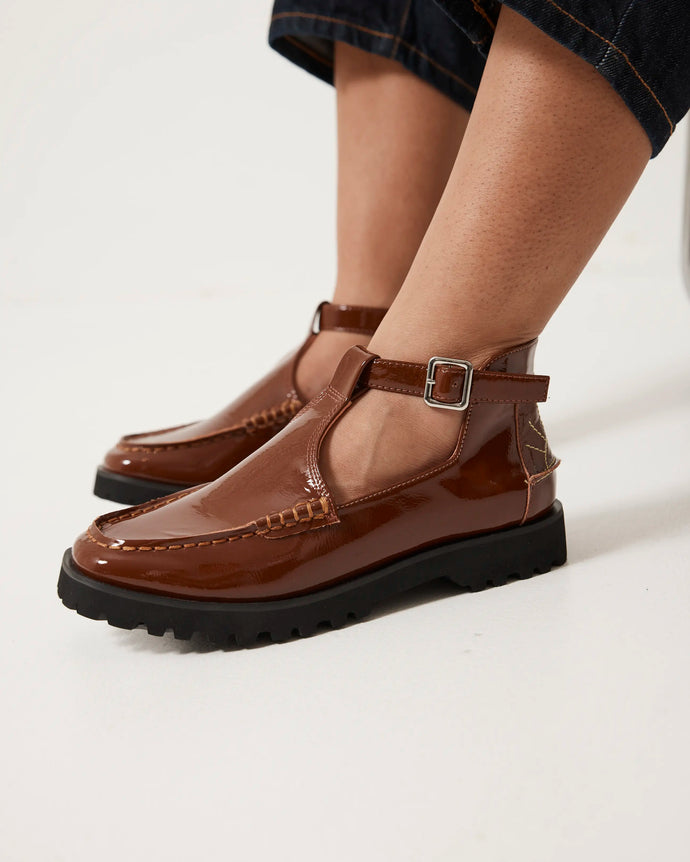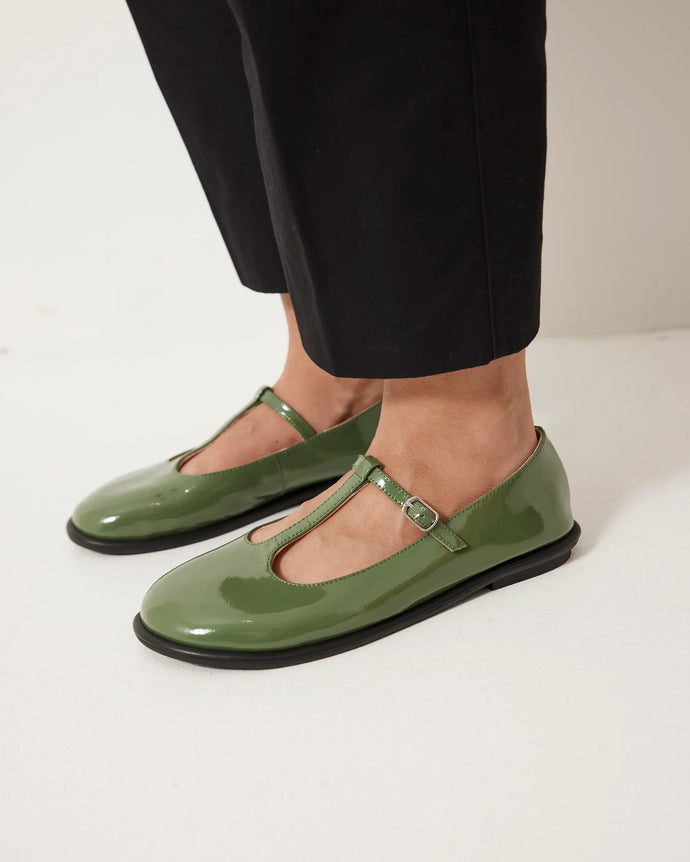Meet Our Eyewear Designer, Alana Van Ewyk.
A long time friend of our brand, Alana has worked in eyewear for over 20 years, including more than 10 spent as the head designer for Karen Walker Eyewear after starting her early career honing her skills on Disney branded product.
A long time friend of our brand, Alana has worked in eyewear for over 20 years, including more than 10 spent as the head designer for Karen Walker Eyewear after starting her early career honing her skills on Disney branded product.
“It was very intense for a junior designer. I recall possibly shedding some tears when the angle of Winnie’s honey pot was off. Everything after Disney felt much easier, but it really instilled in me that the devil is in the detail, and I love that comes so naturally to me today but may annoy others!”
Many of our long time customers will remember we released a small range of eyewear back in 2016. But with only a limited product development budget we decided to take a break from this category to fully focus our efforts into our footwear R&D.
Then Alana became available to help us create an entirely new level and direction for our eyewear. A collaboration which would mean we could execute our eyewear with the same approach and quality level as the shoes - working with best-practice manufacturers and exploring new and innovative materials.
We spent some time chatting to Alana about her thinking behind her first collection for Radical Yes.


Alana, We asked you to respond to Radical Yes 'the brand' in an eyewear capsule - what were some of the immediate considerations / values that came to mind when thinking about how to translate the brand into this category?
The best part of working with brands is when they have a very precise customer, focus, and brand DNA. For me, Radical Yes already had all the parts ready to make the machine. Your philosophies around the end use, how the customer is going to wear it, its practicality, comfortability all these things really help any designer think about how best we can wear this, even down to how useful we can make the sunglass case, all these questions had to be answered in the product.
The existing branding was so easy for me to pull from and create concepts for hardware, it has an element of fun and joy but must be sharp and considered.
I loved those important key points about the brand, it helped really nail down on a concise collection. And the last part of the magic is colour, RY is known for its incredible use of clashing colour. Pallets that aren’t necessarily the ‘norm’ but RY has a way of pulling them together and making them a must.
This was fun, working with some colours and finishes I’d personally not worked with in eyewear in the past like a solid lavender and a milky lime, this feels totally on brand but so fresh to the sunglass world.

Let's talk about the collection itself. Tell us about the shapes you have picked for the launch range and how they relate to our customers IRL end use?
We never really started this collection with a final range plan in terms of size. We just designed and created and then worked out who and how each shape would be worn.
Radical Yes has an incredible customer mix so we were able to be really specific with our shapes and sizes, and even our branding detail.
For example, we have a spinning disc we created for the temple, we were torn on colour and how it would be worn.
Do we go black and keep tonal to the frame, so it’s very classic or do we have fun and go for our brand colour yellow?
We decided we could do both, let the customer choose how they want to wear it, feeling classic keep it on the black side, want to stand out and have some contrast, just spin to the yellow side.
All very fun, but still from an end use POV had to be smooth and really clean.
"We also had the opportunity to do gender neutral styles, we have some beautiful cat-eye shapes, but then some classic rounds that are so perfect for so many faces"
A universal range, with each pair feeling (hopefully) like it’s made specifically for you. Fits, materials, componentry are all very important to the durability and comfortability on your face when wearing for long periods of time, so we made sure to focus on those points in design.
We do hope that our customers find the perfect fitting frame for their face and their personality.


Like the shoes, we have approached the new collection with lots of colour pops. What advice would you give to our customers about picking the best palette for their face? Any advice on how to wear a statement shade?
Eyewear is so great to completely change your mood and your outfit. Just like shoes and bags, so approaching this collection with the Radical Yes colour DNA was fun and easy. I’m totally of the mindset that you can really pull off any shape and colour.
There are a few rules for me I believe should never be broken, one of those is fit. It must fit, your nose bridge, cheekbones, and temple lengths. If it isn’t comfortable, it doesn’t fit and you’ll never love wearing them.
That’s my first, and my second when it comes to colour always wear something that makes your skin tone pop. Ensure you’re not being washed out, that usually means wearing a frame colour that is too close to your natural skin colour.
And have fun! Eyewear can make an outfit and is always front and centre when you’re taking photos!

As a brand obsessed with function as much as form - can you share with us which frames are the best choice for our customers who want high level sun glare protection. And what about the old favourite 'are these polarised?' myth.
Ahhhhh yes form and function, one of the reasons I initially choose eyewear to work on was because of this crossover.
All our frames pass the mandatory and strict Australian/NZ standards.
So, feel secure that whenever you purchase a pair of Radical Yes frames, they will never harm your eyes.
Our lenses do have different categories that relate to how much glare reduction and protection they provide you with. Category 3 which offers the highest, is used in 95% of the range.
We do have a CAT 2 lens as well; this just offers a lower form of sun glare reduction but still completely protective for your eyes. In the future we may try some lighter tinted lenses, but they too will always cover mandatory standards and reduce overall sun glare.

“And polarised is kind of a buzz word. Super helpful if your sailing, fishing or always near or on the water but not so great for everyday IRL use.”
We recognised that our customer didn’t want a performance lens, but they still require the maximum amount of protection so CAT 3 lenses meant our customers could wear near the water and while driving, so provided that multi use option opposed to changing glasses depending on what you were doing. Polarised lenses are not suitable for driving or looking at specific colours, so we decided to stay away from that as an option.
One of the key driving forces on our decision to move back into eyewear category was the improved traceability we could have on the supply chain. Can you tell us more about the materials that have been used in the new collection and share more on the make process itself. How long does it take to make a pair of handmade frames?
Yes! Sustainability and traceability is finally happening in eyewear. It’s not as progressive as some of the other categories in fashion but it’s happening, which is super exciting for the industry.
In the Radical Yes range we use acetate, which is a handmade material, meaning each pair is cut, filed, and fit to a template design. Each part of the frame is filed down, tumbled, and polished with each of the artisans in eyewear working on one part of the frame. This means over 100 pairs of hands touch each frame, while they all work to the same design template, they are handmade so sometimes there will be some slight differences. The timeline for production is around 6 months, sampling 3-4 months so we take around 12 months to complete one range.
We use acetate because of some of its special properties that include being hypoallergenic, malleable, and lightweight. This makes it comfortable and wearable for all day use.
We now also have a bio-acetate that we’re using in the range which is essentially plant based, compared to the petroleum-based option, much better for the environment.
Our cases are made from recycled nylon and our plastic pouches that protect our cases and eyewear are all 100% recycled materials. It was important to us that we keep this as a focus in the range, limiting our single use plastics where we can and hopefully improving on each range.










